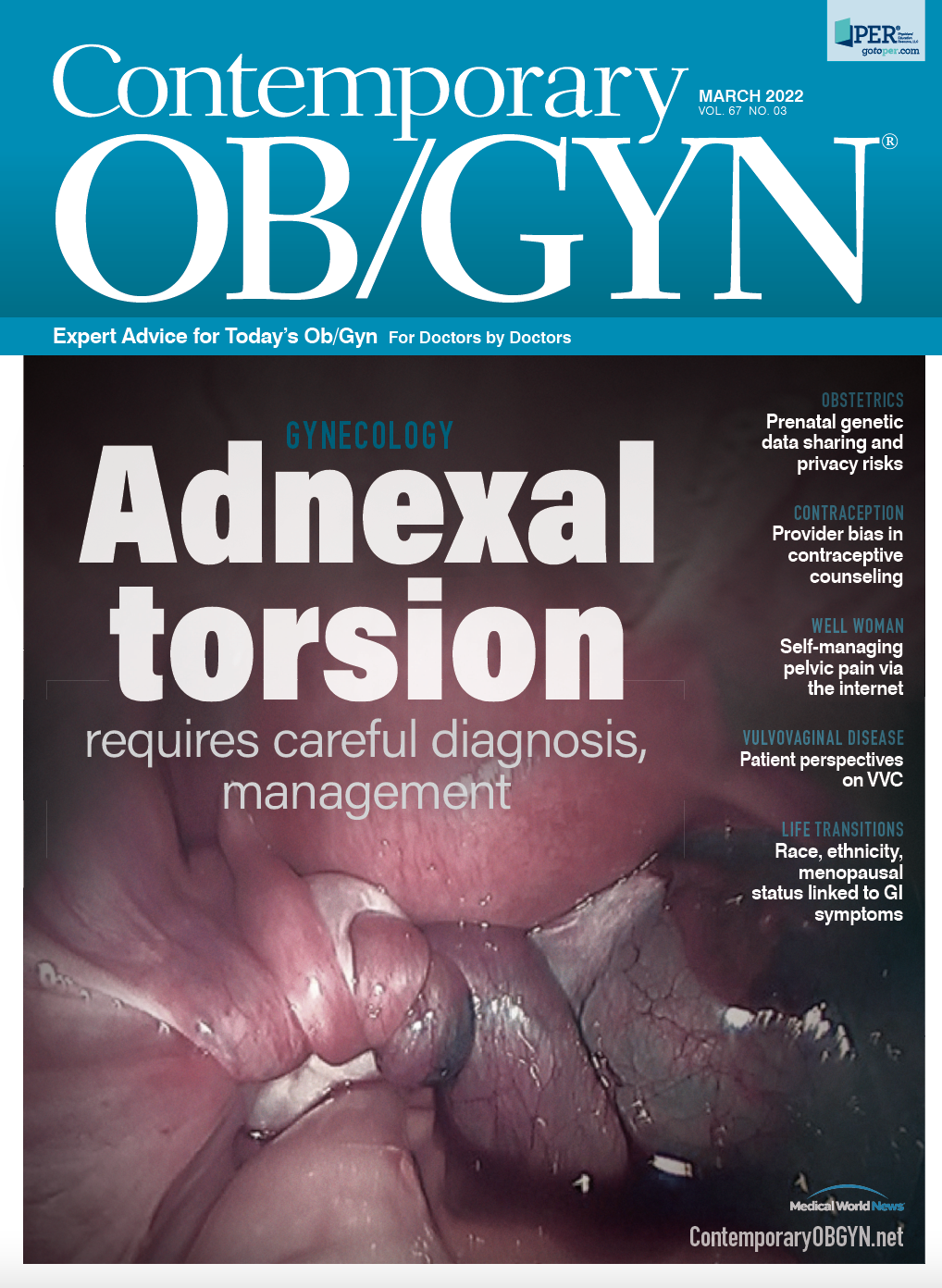In addition:
SMFM conference coverage
Highlights from this year's 42nd Annual Pregnancy Meeting.
Legally Speaking
How important are the experts?
Take a look beyond the cover of Contemporary OB/GYN®'s March issue.
Torsion of adnexal structures can occur in pregnant women, women post-hysterectomy, and postmenopausal women.
Experts take a look at 2 cases to understand abnormal uterine bleeding in adolescents and provide a useful screening tool.
Highlights from this year's 42nd Annual Pregnancy Meeting.
How important are the experts?
Among other things, March is Women’s History Month, giving us an opportunity to acknowledge and appreciate the contributions women have made to society at large while enhancing their own lives.
National awareness months and days span a variety of topics, from celebrated foods (think National Ice Cream Day, National Bagel Day, National Pizza Day) to businesses (free Slurpee at 7-Eleven) to our terrain: health issues. March alone is a national health awareness month for over 10 conditions, one of which is endometriosis.
Provider bias—stereotyped and prejudiced assumptions about patients and their “best interests”—can limit patient autonomy and informed decision-making, amplify medical distrust, and deter patients from seeking care. Such bias is often amplified when patients are young, low-income, and/or Black, Indigenous, or people of color (BIPOC).
Being Non-Hispanic (N-H) Asian is a significant influencing factor for the number of gastrointestinal (GI) symptoms and the severity scores of GI symptoms, according to a study of 4 major racial/ethnic groups of midlife women in the United States.
Among women with vulvovaginal candidiasis (VVC) or recurrent VVC (RVVC), the 3 most common signs and symptoms are itching (91.2%), burning (68.3%), and redness (58.1%), according to an online patient survey in BMC Womens Health.
A survey in the American Journal of Obstetrics & Gynecology revealed that patients with chronic gynecologic pain were twice as likely to use social media to understand or manage their condition than those without pain, at 37.8% vs 19.7% respectively.
An oral abstract presentation at SMFM’s 42nd Annual Pregnancy Meeting explored cfDNA testing and participants’ knowledge and willingness of genetic data sharing.
Contemporary OB/GYN® sat down with Jessica Shim, MD, an attending in the Division of Gynecology, Department of Surgery, Boston Children’s Hospital and Harvard Medical School to discuss Myfembree (relugolix, estradiol, and norethindrone acetate; Myovant Sciences, Pfizer) and its potential approval in May 2022. If approved, Myfembree could be game-changing for women with moderate to severe endometriosis-associated pain.
